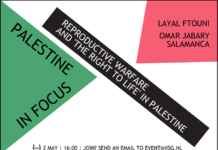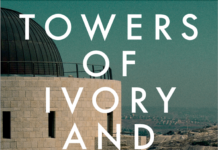Faris Giacaman
Mondoweiss / September 13, 2023
Thirty years on, the legacy of Oslo has given birth to two parallel worlds — one that rejects the order that Oslo created, and one that will stop at nothing to preserve it.
In the past two years, a new world emerged with the hopes of displacing the one that came before it. The old world was situated within the remnants of a national liberation movement, now defeated and licking wounds that had festered ever since the end of the Second Intifada. It offered up many justifications to normalize its state of decay — the objective of state-building, “economic peace,” entrepreneurship, and consumption.
The new world was different. It had grown tired of the narrative that the old world kept trying to sell it, which read agency into resignation and patriotism into collaboration even as the homeland it claimed to be building continued to shrink before its eyes. The new world was born out of the old one because it rejected taking pride in humiliation, daring to resist when most of society had convinced itself that “existence was resistance.”
Glimmers of this world were already emerging nearly a decade ago in fits and starts — as far back as the 2015 “Knife Intifada” and the subsequent rise of “lone wolf” operations, the creation of a subversive commons in Jerusalem, and the multiple “popular upheavals” in the West Bank, Jerusalem, and beyond. At the time, it had many Palestinian detractors, variously characterizing the acts of resistance that emerged as futile, counterproductive, or even tragic, lamenting that the disaffected young were “throwing their lives away” for nothing. This common refrain became harder to repeat following 2021 when Palestinians from the river to the sea rose up in a fleeting moment of collective upheaval. But like its predecessors, the uprising either dissipated or was summarily put down by colonial authorities.
In the aftermath of the “dignity upheaval,” the new world fully emerged in Jenin and Nablus. Young Palestinians turned to armed resistance for the first time since the Second Intifada — seemingly repudiating those who would write them off as part of the “Oslo Generation” — and set about the work of carving out strongholds for their nascent armed movements. Jenin refugee camp’s history as a haven of armed struggle meant it would soon become hostile terrain to both the Oslo regime and the colonizer. Nablus wasn’t able to establish the same kind of semi-autonomous space, but it did capture the imagination of a generation that made the continuation of resistance past the campaigns of assassination, arrest, and repression possible.
For a time, the old world sat back in silence, watching as the new world came into being and hoping that it would fizzle out and die on its own, or that the settler colony would successfully wipe it out. But after a year of a relentless Israeli counterinsurgency campaign, the resistance not only survived extermination but was spreading. Now, the new world sprouted up in places like Aqbat Jabr refugee camp in Jericho, or Nur Shams and Tulkarem refugee camps in Tulkarem.
The new world wasn’t going anywhere. In its second year of existence, the defensive capabilities of the armed resistance in Jenin began to grow, making use of increasingly more sophisticated IEDs in army incursions into the camp. In one incident, the resistance was able to successfully take out a state-of-the-art armored troop carrier. This made the colonial authorities sufficiently worried that its army launched a full-scale invasion of the camp over the course of two days in early July, aiming to deal a blow to what it called the “infrastructure of terror.” It emerged with a handful of confiscated rifles and IED labs to show for it and a slain soldier from the elite Egoz unit, while the bulk of the fighting force of the Jenin resistance remained intact.
The resistance was able to avoid extermination and, above all, preserve its capacity to resist. Yet the Jenin operation wasn’t over; its unofficial second phase was just getting started and was to be carried out by the guardians of the old world. But the new world resisted. It expelled a Fatah delegation from the funeral of the Jenin operation’s martyrs, and protestors confronted PA security forces in Jenin after the Israeli withdrawal.
Not to be deterred, the old world made a show of force in the following days by imposing its presence in the camp and the neighboring area and entering as an ambassador of reconstruction and relief. It then embarked on a campaign of arrests of resistance fighters, determined to limit the new world’s reach and preserve its relevance and usefulness in the eyes of its colonial patrons.
That campaign has continued to this day, and it has been underscored by the news that the U.S. recently sent a shipment of weapons and armored vehicles to the PA, presumably to help it regain control of the West Bank.
A struggle of worlds
These two worlds now exist simultaneously. For a time, they existed in parallel and did not intersect, but as the new world continued to expand its reach — both on the ground and in the minds of Palestine’s youth — it meant the rejection of Oslo and the world it created. The result is the emergence of two separate modes of being in Palestinian society, one based on the insistence on continuing a life of consumption and paper-thin “normalcy,” and the other characterized by the constant exposure to the colonial reality of settler encroachment and the death of friends and loved ones — and the desire to avenge them.
Often, people will experience both modes of existence simultaneously in a maddening discrepancy. Some evade the contradiction by retreating into an uneasy form of escapism. Others who have the means settle into a comfortable and insular middle-class existence, and those who do not enjoy the same luxury might settle for a more precarious yet equally escapist trajectory. And others still choose to fight and reject all of it. Their names and faces adorn posters and necklaces.
Yet the trouble with the features of Oslo’s world is that even though it has managed to ensnare a population in a web of dependency and the cycle of consumerism that it creates, it remains powerless and unable to shield that same population from the ravages of settler pogroms and colonial predation. Built into its structure is the domestication of the Palestinian political class and, along with it, its means of Palestinian self-defense. This was most jarringly apparent in the PA president’s entreaties to the international community in May to “protect us” as one would protect “an animal,” and in the enraged rebuke of the PA Prime Minister by an elderly man in Turmusayya — “either protect us or arm us!” — in the aftermath of a settler pogrom in June.
The old world could only hold for so long. Out of necessity, the new world emerged, and it will continue to emerge in different ways even if the current resistance formations are put down and suppressed. But the structures that keep the old world together — propped up by the alliance of capital, clientelism, and totalitarianism — remain. They have proven durable in the face of this generation’s rage, hoping to outlast it, but that hope remains a gamble — because that rage, and the new world it creates, will continue to break out as the colonial reality persists and friends continue to be taken from one another.
Faris Giacaman is the Managing Editor for Mondoweiss












